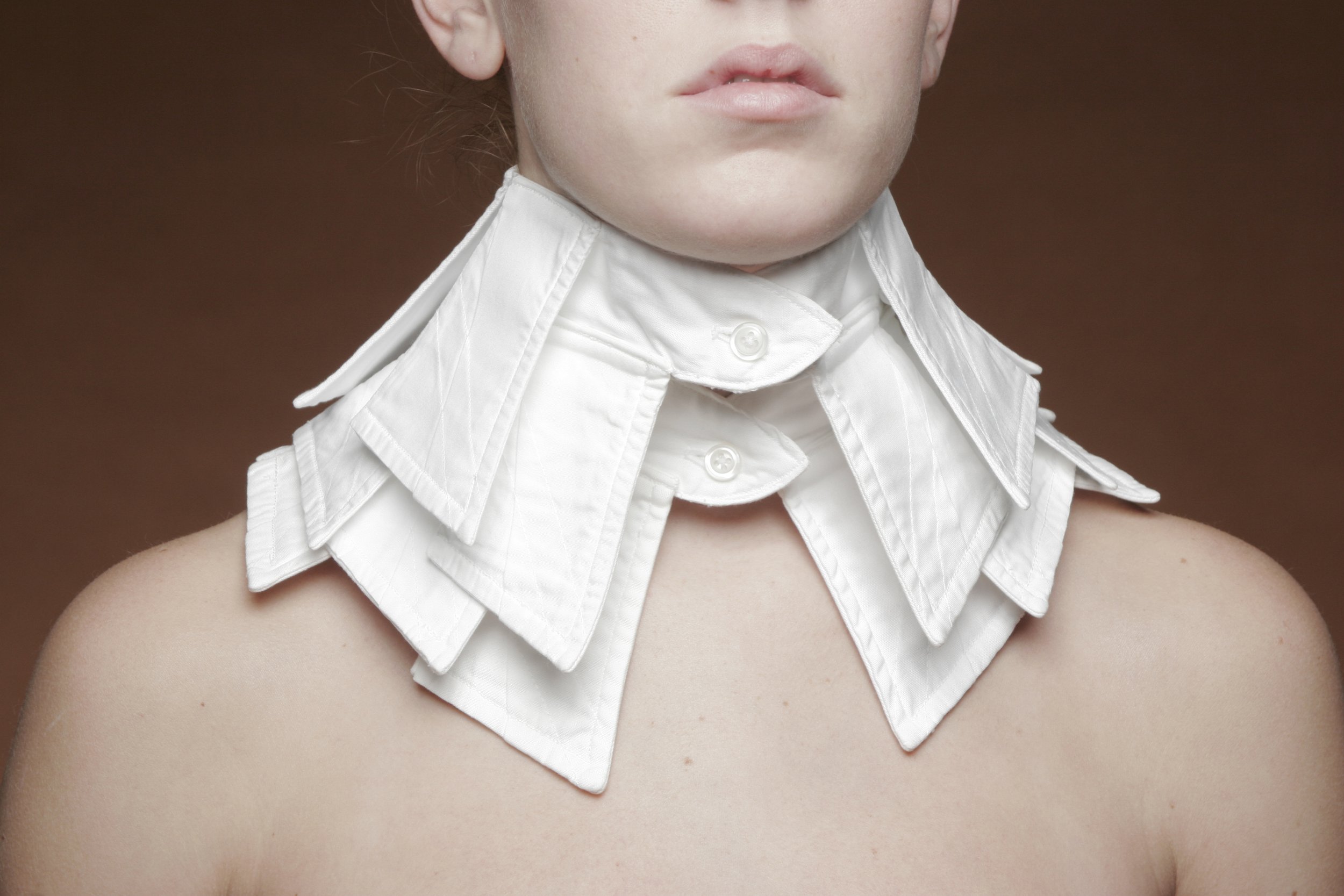 Image 1 of 6
Image 1 of 6

 Image 2 of 6
Image 2 of 6

 Image 3 of 6
Image 3 of 6

 Image 4 of 6
Image 4 of 6

 Image 5 of 6
Image 5 of 6

 Image 6 of 6
Image 6 of 6

White Collar 14
altered men's white shirt collar size 16 1/2
photographed by Tom McInvaille
2005
—————————————————————-
White Oxford shirts have a long tradition of being the staple of the socially acceptable, upper-class male uniform. The White Collar series manipulates this socially charged form of adornment/clothing, questioning status, gender, and sexuality. Exploring the gray area between textiles and jewelry, they investigate what is acceptable versus what is taboo. Why do similarly detached white collars, an essential component of the playboy bunny costume, evoke both female power and misogynistic male dominance?
altered men's white shirt collar size 16 1/2
photographed by Tom McInvaille
2005
—————————————————————-
White Oxford shirts have a long tradition of being the staple of the socially acceptable, upper-class male uniform. The White Collar series manipulates this socially charged form of adornment/clothing, questioning status, gender, and sexuality. Exploring the gray area between textiles and jewelry, they investigate what is acceptable versus what is taboo. Why do similarly detached white collars, an essential component of the playboy bunny costume, evoke both female power and misogynistic male dominance?
altered men's white shirt collar size 16 1/2
photographed by Tom McInvaille
2005
—————————————————————-
White Oxford shirts have a long tradition of being the staple of the socially acceptable, upper-class male uniform. The White Collar series manipulates this socially charged form of adornment/clothing, questioning status, gender, and sexuality. Exploring the gray area between textiles and jewelry, they investigate what is acceptable versus what is taboo. Why do similarly detached white collars, an essential component of the playboy bunny costume, evoke both female power and misogynistic male dominance?